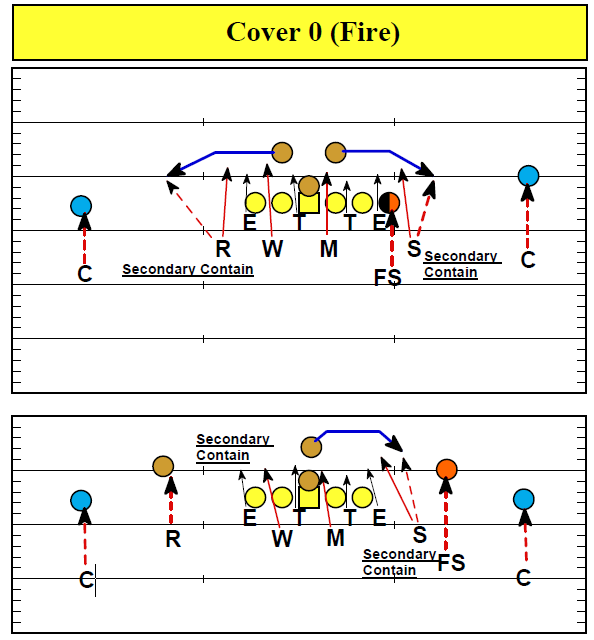This is part 1 of a 4 part series on Secondary Play
There is a link at the bottom of this post to Part 2 of the series
The reason for the color code added is the ability for a defense to make adjustments on the field by using colors rather than using the term for the actual coverage.
Field Identification: Diving the Field into Drop Zones

Field identification is important to understand what area of the field your receivers will be running routes through. The Blue area in this illustration shows you the side line rule for underneath coverage in Cover 3. The flat defender usually will break down when defending the flat at about 6 yards from the side line. The green area shows you how the 2 deep coverage works. A cover 2 defender usually will stay off the side line at about 9 yards. The deeper the routes the further off the sideline a defender can play because, the flight time of the ball thrown.

The diagram above breaks the field down into zone areas. Each area of the field is broken down into areas of responsibility as defenders drop. You will always have two areas of responsibilty for understanding coverages, an underneath coverage which extends fifteen yards deep from the line of scrimmage and deep coverage that takes you fifteen yards or deeper.
When playing underneath coverage a defender needs not get any closer to the sideline than 6 yards, this becomes his landmark for breaking down on a receiver in his area and that area is termed the Flat area of responsibility. When in any type of deep coverage the secondary defender needs not get any closer than 9 yards to the sideline, this becomes his landmark.
The reason for 6 yards in underneath coverage is because it is considered that area when the ball is thrown the defender can still react to the break on the ball. The depth of 9 yards on deep coverage is different because the ball is in the air longer thus giving the deep defender longer to recover and break on the ball.
Pass Zone Concept: Pattern Read
Numbering Receivers In Your Zone:
When you talk about zone coverage and the concept of playing the receiver in your zone, you must first be aware of who can become a potential threat in your zone. A defender must first begin by numbering their eligible receivers from the outside in, and by naming the receivers in accordance with the pass zones they can initially threaten.
Examples of Pattern Reading:
# 1 Receiver is considered Flat.
# 2 Receiver is considered Curl.
# 3 receiver is considered Hook.

When the ball is snapped and the play develops, receivers will run combination routes, some of which will cross. When receivers run routes which cross, they exchange numbers and pass zones. When receivers run crossing routes or exchanges our defenders must adjust to the receivers now in their
pass zones.

Remember: If you have Flat then stay as wide as the widest receiver. If you have curl make the quarterback throw across your face. If you have Hook, stay inside the same as you would if you had Curl.

Depending upon the offensive formation the Outside Inverts are the first to make their adjustments and come off their “Dog” to cover a receiver or running back to their side man to man. Strike and Razor have number two receiver to their side.
Cover “0” is a full “Dog” with eight potential rushers applying pressure to the offensive scheme. Both Strike and Razor are contain rushers and responsible if the outside rusher for picking up any back that shows to their side. If inverts are removed by alignment, Baca call to the DE to
your side.
Look for possible fade if Quarterback reads press coverage by the Corners.
Defensive Strength: Cover “0” is an eight man rush and is a full pressure defensive scheme.
Defensive Weakness: Possible mismatch with Sam and Rover with # 2 receiver too their side.
About the Author of this post:
Jerry Campbell has over 30 years of high school and college coaching experience. He has experience as a head coach, offensive coordinator, and various position coaches. He has written numerous football coaching articles in various publications, is the author of over 30 books on coaching football, and has produced 12 coaching video series. Additionally, he is a nationally sought after speaker on the coaching clinic circuit.
When might Parts 2 through 4 be sent for Understanding Secondary Play and Coverages, if it has not already been forwarded?
THANKS!
Hi Lee,
Thanks for your interest.
I will be including those in the upcoming days emails.